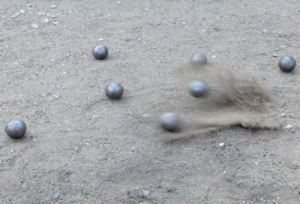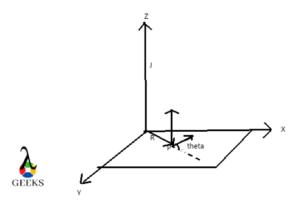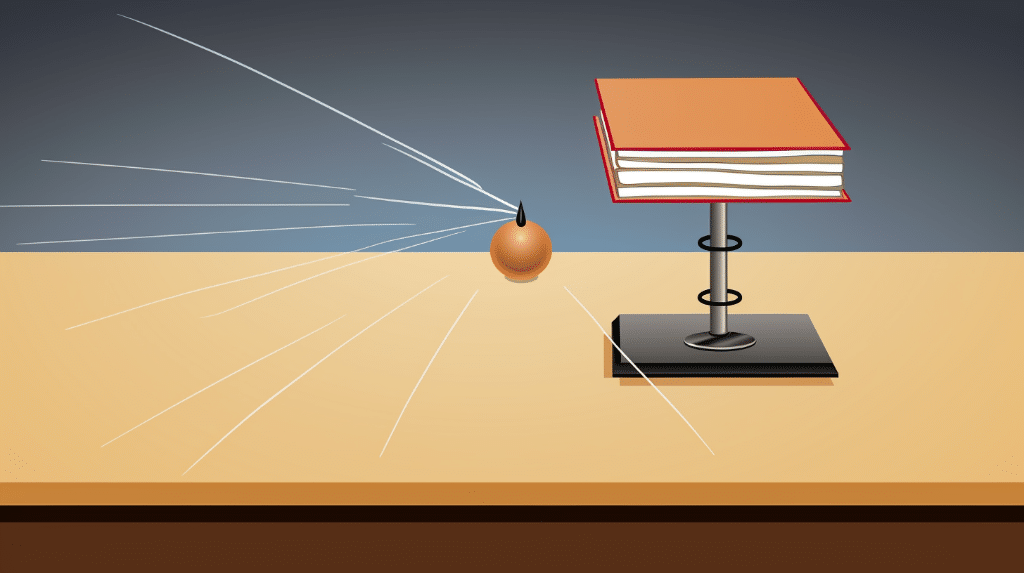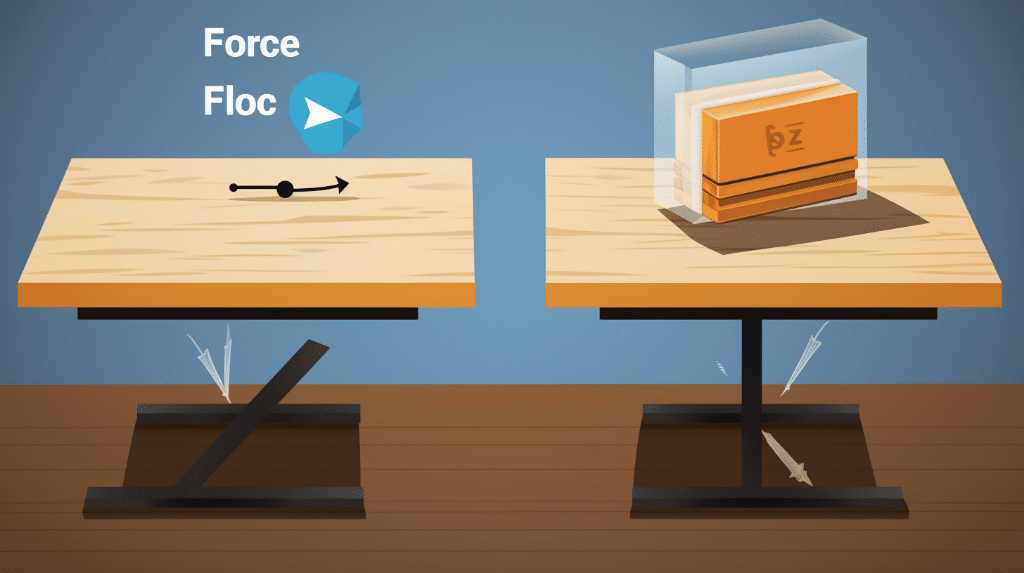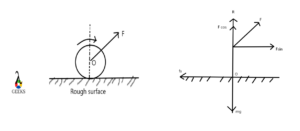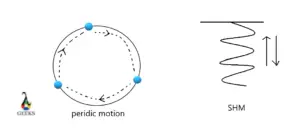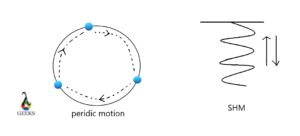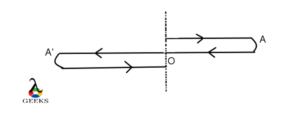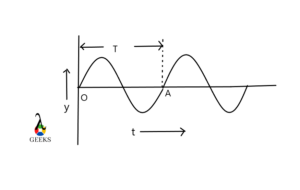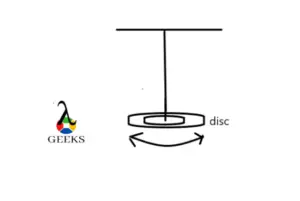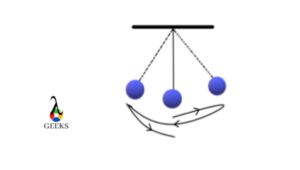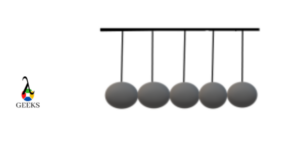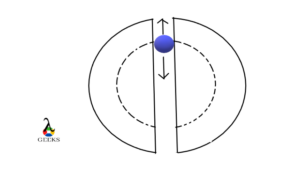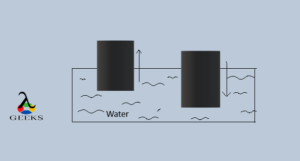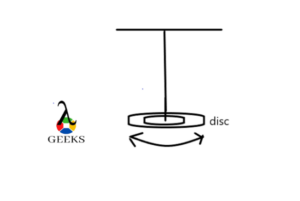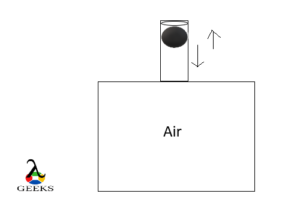When two bodies physically strike each other, or if their path of motion is influenced by each other, then we say it as collision.
To know, Is Momentum Conserved In An Inelastic Collision, let’s first know collision. Collisions are of two types: an elastic collision and the other is an inelastic collision. When two bodies strike or collide, then the body’s kinetic energy is changed in the collision. Such a sort of collision is called an inelastic collision.
During any collision, the force exerted on the bodies when they two collide is equal and opposite at all instants during the collision. And when the collision gets over, the interacting force between them gets zero.
Is Momentum always conserved in inelastic collisions?
When two objects collide, either inelastic collision or in an inelastic collision, the collision between them is controlled by the law of Momentum and the law of energy.
Suppose the collision took place in an isolated system. We will find that the total Momentum of the bodies is conserved on the condition that the system of bodies does not experience any external force impacting it. Hence, the Momentum of the system’s body will be equal before and after the collision occurs.
During the collision, where two bodies are involved, we see that the Momentum loosed by one object is acquired by another object involved in the collision. As a consequence, the Momentum of the system of two bodies is intended to conserved.

Why is Momentum conserved in an inelastic collision?
To understand “Why is Momentum conserved in an inelastic collision, let us go through the following. Let us take an example of a system having two object, in which the two objects strike to each other.
Wherein the two body are not bring to bear any sort of superficial force. The only force exerted by them is due to their interaction only. This means the two objects at any given instant have the same rate of Momentum change when they are interacting.
Hence, the objects in contact have equal and opposite Momentum. Because of this, the combined change in their Momentum will be zero. By the law of conservation of Momentum, we know that “In absence of any external force on the objects, the momentum of bodies will not be altered”. Now, Newton’s third law states that “the forces exerted by the objects interacting are equal and opposite”. And, the other condition is that objects must touch each other same span of time.
The given conditions are correct for all sorts of collisions where Newton’s third law is applied to all conditions where a force is applied. When these two conditions are met, the impulse delivered to each thing by the other is equal and opposite. Hence we can say that, As long as no external forces act on the system, Momentum remains conserved as a direct consequence of Newton’s second and third laws.
Where does Momentum go in an inelastic collision?
As above mentioned, during an inelastic collision, the Momentum gets preserved. Nonetheless, the kinetic energy of the system in the collision is not conserved.
The kinetic energy is not preserved because, it gets converted into other forms of energy when they strike to each other. For example, the object gets deformed, it changes into sound, heat, etc. To understand this, let’s take the instance of two trucks at outrageous velocities. The collision between the trucks here is inelastic.
Now, if we start to calculate the Momentum of the trucks, we will find that the Momentum of trucks before collision and Momentum after the collision when the trucks have collided is the same. But in the same place, if we calculated the kinetic energy of trucks when they were in speed and collided. Then the kinetic energy will be different. The kinetic energy of those trucks has been converted to some other form of energy.

Does the impulse-momentum theorem apply to inelastic collisions?
Impulse is the measure to which extent does an external force brings a change in the Momentum of the body.
We can also say that the Momentum of a body is the impulse required to bring a particle from rest to the motion. As we got to know that, the impulse is used to get an about the change in the state of moving particle, and we can use the impulse-momentum theorem in an inelastic collision.
Where impulse is given as:
J=ΔP
Is total Momentum conserved in an inelastic collision?
We can say that it is true that the total momentum of the body which are in an inelastic collision, have there total momentum conserved.
This can be observed, by calculating the sum of momentum of two bodies in inelastic collision. And calculating there momentum, once the collision has been occurred. The two calculation of before and after collision is found to be same.
Problems to explain Is Momentum conserved
Q. A gun which has a bullet of mass 100 gm. When the gun fires a bullet with a 75m/sec velocity. On firing the gun recoil with a velocity of 2m/sec. Now find the mass of the gun for the given condition.
By the law of conservation of Momentum
Mass of gun*recoil velocity of gun=mass of bullet*velocity of bullet
m1v1=m2v2
0.100*75=m2*2
m2=3.75kg
Q. Rajan is driving a truck loaded with goods, where its total mass is 200 kg. The truck is traveling in the the west direction with a 10m/sec speed. Now Rajan hits the rear end of a bus having a mass of 1400kg. After the collision, both truck and bus stick together. Now calculate the final Momentum of the vehicle after the collision.
We know that the formula for Momentum is given as Formula: Momentum P = MV.
From, law of conservation of momentum we get to know that,
P initial = P final
(MV)Truck+(MV) Bus = MTruck+(MBus*Velocity)
(2000*10)(1400*0)=(2000+1400)*Velocity
20000/3400= Velocity
Velocity=5.8m/s
From the above-given calculation, we get to know that the vehicle will now move with a speed of 5.8m/s.
Q. Manan is moving down a steep hill, downwards. Manan has a mass of 20kg, and he is sliding down the slope at a 5m/sec velocity. Manan’s elder sister has a mass of 30 kg. Both of them are sliding down, but the sister is sloping slowly with a 2m/sec speed. Manan collides with her sister. After colliding, both of them start moving together. Now calculate their resultant velocity.
From the law of conservation of Momentum, we know that their collective Momentum will be equal to their final Momentum,

V=(100 kg.m/s+60 kg.m/s)/50 kg
V=3.20 m/sec
From the above calculation, we get that their combined velocity will be 3.20 m/sec.
Also Read:
